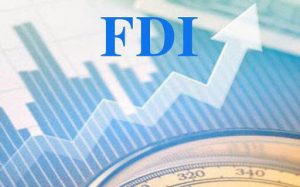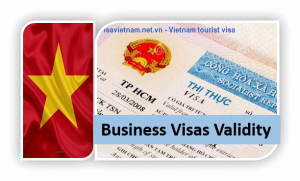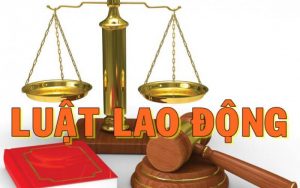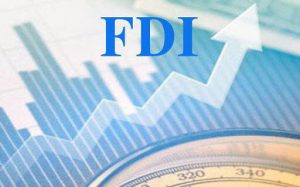For 30 years, Vietnam has been an attractive destination for FDI. Foreign capital has become a major driver of Vietnam’s economic growth, creating more jobs, and improving trading activities. Nevertheless, foreign investment in Vietnam is significantly driven by low labor cost and generous profit-based incentives. Hence, let take an overall view of the present FDI as per the sector which are listed below with limitations to percentage of ownership and applicable conditions.

Banking services:
- Any foreign individual: not to exceed 5%
- Any foreign organization: not to exceed 15%
- Any foreign strategic investor: not to exceed 20%
- Any foreign organization and related parties: not to exceed 20%
- Total foreign ownership in a Vietnamese exceed 30%
- Total foreign ownership in a Vietnamese non-bank credit institution (such as a finance company):49%
Petroleum: Various limitations, depending on the specific business
Civil Aviation: For airlines or companies providing aviation services: 30% for all foreign investors
Land Transportation: 49% (transportation of people) 51% (transportation of goods)

Logistics:
- Sea transportation: 49% Container handling: 50%
- Customs clearance and brokerage: no cap but must be in the form of a joint venture with Vietnamese investor
Distribution and Retail and Retail: Prohibited for certain goods such as cigarettes, publications, medicines, crude oil medicines, crude oil etc. No limitation on most goods
Advertisement: No cap but must be in the form of a joint venture with Vietnamese company authorized to engage in the advertising business
Publishing: 0% for publishing activities. Unlimited for printing and importing activities in relation to publications
Press: Highly controlled, depending on the specific line of business
Education: 100% applicable to schools for short-term training, kindergartens (for foreign children living in Vietnam), primary and secondary schools (for foreign and Vietnamese
students), vocational schools and universities
Healthcare: No limits
Military-owned companies: Major state-owned companies under the ownership of the Ministry of National Defense will remain wholly owned by the State
Now the Government is renewing its FDI strategy towards increasing investor confidence and the added value to the economy. Encouraged sectors are those in which the country has strong advantages and where foreign investors can offer high-technology and high value-added goods and services that domestic Vietnamese companies do not have. The sectors include high-tech/ICT, processing, and manufacturing, supporting industry, tourism, services, and high-tech agriculture. Though this strategy is still in draft, the Government has continuously encouraged foreign firms to invest in these sectors. Some sectors are more developed than others and some have more potential for growth. We would like to elaborate on some key industries:
Business process outsourcing: Information and communication technology (ICT) is a booming sector in Vietnam, supported by world-class telecommunication infrastructure. ICT revenue in 2018 reached almost US$100 billion, posting an 8% increase compared to 2017. Software export revenue is estimated to reach US$3.5 billion, an increase of 11.6% over the previous year. Within the ICT sector, business process outsourcing (BPO) is an industry that is poised for growth due to: Growing talent pool, Government policy, A vibrant digital sector, Competitive cost, Companies are diversifying from China and India
Solar and wind energy: Vietnam’s energy demand is surging heavily with forecasts indicating that by 2035 the total final energy demand will be nearly 2.5 times higher than in 2015. To reduce national energy production and consumption dependence on fossil-based energy sources and contribute to energy security, renewable energy is a very promising area. Growth in the non-hydro renewables sector is set to gain momentum, with opportunities in wind and solar. In 2018, Vietnam attracted 23 inbound renewable energy investment projects, mainly in Asia-Pacific, according to FDI Intelligence. Among the factors contributing to the renewable energy growth are: Government policy, Moving away from conventional power, Geography advantage, Incentives for renewable, Openness for foreign investors
Retail banking: Vietnam’s financial services sector in general and retail banking are undeveloped but boasts high growth potential. The Asian Banker predicts Vietnam’s retail banking income to experience a CAGR of 25% between 2016 – 2020. Within this sector, we foresee room for growth in retail banking, payment cards and wealth management services.
A heavily cash-based society, increasing digital connectivity, 59% of the population is banked, Young and populous consumer base, Growing affluence
Tourism: The post COVID19 Vietnam’s tourism sector was expected to spearhead the country’s economy and its growth. According to the World Travel & Tourism Council, the direct contribution of tourism to Vietnam’s GDP in 2017 reached US$12 billion (approximately 5.9% of total GDP) and is forecast to double to US$25 billion by 2028. Within tourism, we see the following potentials for growth and investment: 20% growth in tourist, Demand for luxury travel 4 to 5-star hotels, Cultural heritage, Opportunities in coastal areas, Better market access
Consumer goods: Vietnam is one of the most promising consumer markets in the Asia Pacific region, along with Indonesia, India, the Philippines, and China. Vietnam’s consumer expenditure in 2018 reached approximately US$181 billion (in current US$, World Bank) and is forecast to grow further in the future. Against the backdrop of rising consumer spending and disposable income in Vietnam, several opportunities have emerged for consumer goods. In this sector, we will explore some of the key points driving those opportunities.
Double digit growth forecast, Areas for opportunities, E-commerce booming, Rising household incomes, Household spending growth

Manufacturing: As China’s manufacturing sector experiences rising labor cost and due to the increasing US – China trade tension, Vietnam is well-positioned to be Asia’s new manufacturing center, particularly in the electrical and electronics sector. Vietnam has been shifting gear into high technology, represented by around US$43 billion of high-tech export value in 2016 which is higher than its peers including Thailand (US$34 billion), Philippines (US$32 billion) and Indonesia (US$3.9 billion). We will look at some factors below to explore why Vietnam should be the next destination for manufacturers.
An emerging manufacturing export hub, Higher-value manufacturing exports, Strong demand for Vietnam manufactured goods, Proximity to China’s supply chain and markets, Better physical connectivity through significant investment in infrastructure
Cities where most of the FDI companies are registered: Ho Chi Minh City continues to lead amongst all cities and provinces, followed by the northern province of Bac Ninth and the central province of Thanh Hoa. Other major FDI destinations include Nam Dinh, Binh Duong, Kien Giang, and Hanoi.
Hopefully, the sector in which you have expertise was included in our article and now you want to have detailed research as per your product & services.
So, How GPO can support you in doing market research or to have an business legal advice, for that Please get in touch with us by clicking on this link: http://hroutsourcing.gpo.vn/ so then we can take it forward from here and begin our journey to build a long-term partnership.
Thanks for your valuable time!
Stay healthy and stay safe
Top
















